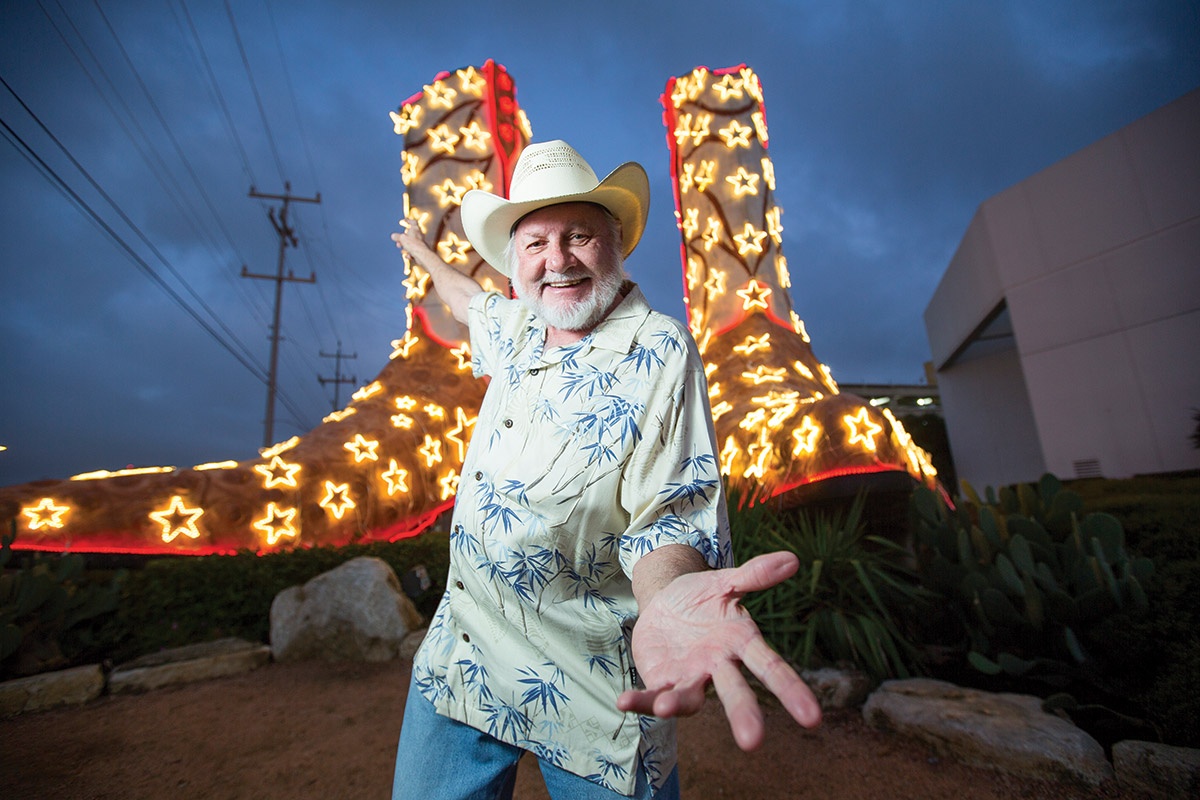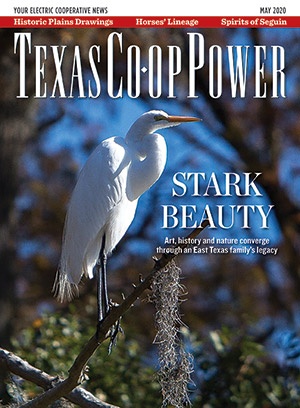Editor’s Note: The late historian and author Lonn Taylor profiled Texas characters for his weekly Rambling Boy column in The Big Bend Sentinel. This look at artist Bob Wade from 2018 is one of them. We offer it as a remembrance of Wade, who died December 24, 2019.
Several years ago, my wife and I were enjoying dinner at Marfa’s Blue Javelina when a cacophony of sirens and gunshots erupted outside on U.S. Highway 90. A battered sedan came by at 90 miles an hour, followed by four Border Patrol vehicles and a sheriff’s car with lawmen leaning out of the windows shooting at the sedan. We were witnessing a narcotics chase, which ended on the east side of town when a bullet went through the sedan’s rear window and the 17-year-old narcotraficante pulled over and gave up. His bullet-riddled sedan sat on the shoulder of the highway for several days.
That is why I did not give a second thought to the bullet-riddled yellow Chevrolet step van that appeared in the parking lot of Marfa’s Lost Horse Saloon not long after. I assumed it was the relic of another narcotics chase. So I was taken by surprise when artist Bob Wade called and asked if I would write about his shot-up Bonnie and Clyde Mobile that was on display in Marfa. I went back for another look and, sure enough, in red paint under the windshield it said, “Bonnie and Clyde Mobile © BobWade.com 1982.” It needs a larger label.
Wade told me that he bought the vehicle in Dallas in 1982 to drive in a Mardi Gras art car parade. He had it painted school-bus yellow so the bullet holes would show up, and then took it to a shooting range in Garland and paid the owner to pepper it with machine gun fire. In the parade, he tossed plastic toy soldiers to the crowd and was soundly booed; the crowd evidently felt that the van was not in the Mardi Gras spirit.
Wade, who was known by the nickname “Daddy-O,” is a native Texan, born in 1943. For 40 years, he has adorned the Texas landscape with giant sculptures incorporating iconic Texas symbols. His best-known work is probably the 35-foot-high cowboy boots he created in 1979 for the Washington Project for the Arts, which were initially displayed in a public art space three blocks from the White House. They are now at North Star Mall in San Antonio, where at Christmas they are lit by 8,000 red and white LED lights. In 2015 they were recognized by the Guinness Book of World Records as the world’s largest cowboy boots.
Wade has also built a 40-foot-long wire-and-polyurethane iguana named Iggy, which is now at the Fort Worth Zoo, and a set of six 10-foot-high dancing musical frogs. The frogs were originally made for a Dallas night club called Tango and were christened Six Frogs Over Tango because the club was owned by Shannon Wynne, whose father owned Six Flags Over Texas. The frogs lived briefly atop Carl’s Corner, on Interstate 35 [in the HILCO Electric Cooperative service area].
Wade also developed a process for digitizing Western photos from old postcards and enlarging them onto canvas, which he then airbrushed with transparent layers of acrylic paint, producing the effect of giant hand-tinted photographs. His cowgirls, Mexican revolutionaries and rodeo performers are in permanent collections all over the country, and his enlarged and colored photograph of Buffalo Bill Cody and Prince Albert I of Monaco hangs in the royal palace in Monte Carlo.
Wade first came to my attention in the mid-1970s, when some friends in Denton told me about him supervising a master’s thesis that involved a student named Andy Feehan tattooing Harley-Davidson wings on a pig.
The tattooed pig did not exactly establish Wade’s (or Feehan’s) reputation as an artist, but in 1979 Wade was invited to enter a piece in the prestigious Paris Biennale. He submitted Texas Mobile Home Museum, a 1947 Spartan trailer coach filled with Texas oddities, including a taxidermied bucking bronco, a two-headed calf, a stuffed armadillo and sets of longhorns. This was the second year of the Dallas TV series, and the French were crazy about anything from Texas; the trailer was a huge hit, and Wade’s artistic future was secured.
It is appropriate that the Bonnie and Clyde Mobile ended up in Marfa because Wade lived there when he was in the fourth grade and his father was the manager of the Paisano Hotel. This was long before Donald Judd came to Marfa, so Wade said he was the first contemporary artist to live in Marfa.
When I was talking to Wade about the Bonnie and Clyde Mobile, I asked him how he was able to resist squeezing off a few rounds himself when he was having the step van shot up. He lowered his voice on the phone and said, “You know, I’m a real Texas guy and all that, but I’ve never felt comfortable around loaded guns.”
I’ve always known Daddy-O is a softie at heart.
Correction: June 12, 2020
This story was updated to correct the name of the artist who tattooed a pig. His name is Andy Feehan, not Andy Sheehan.


